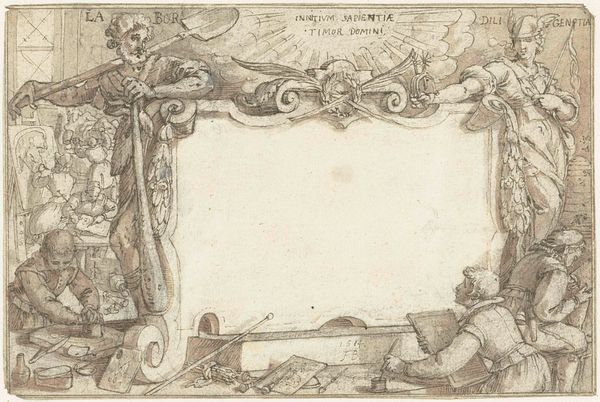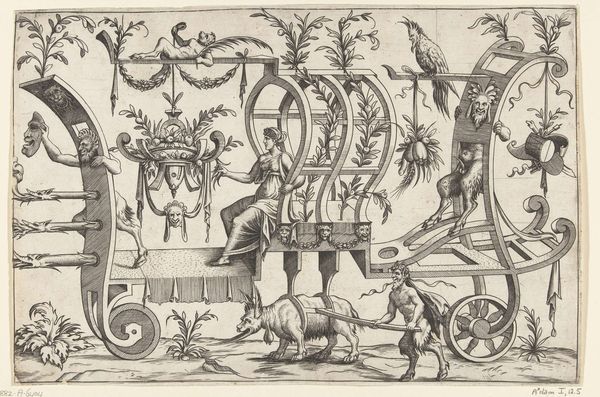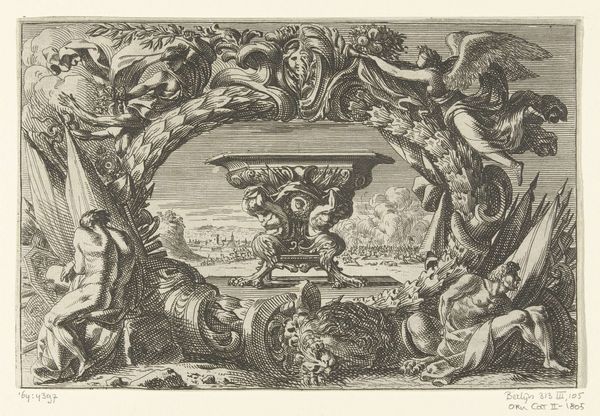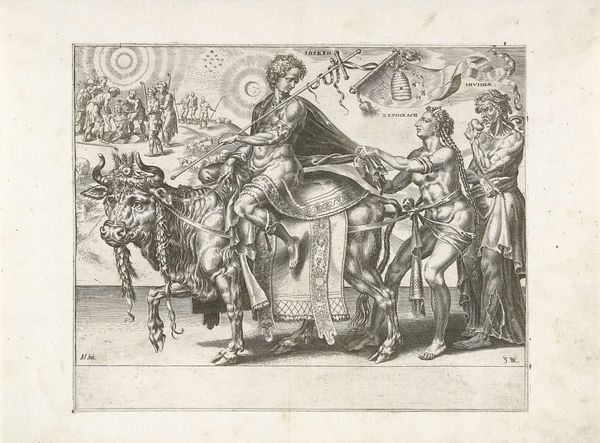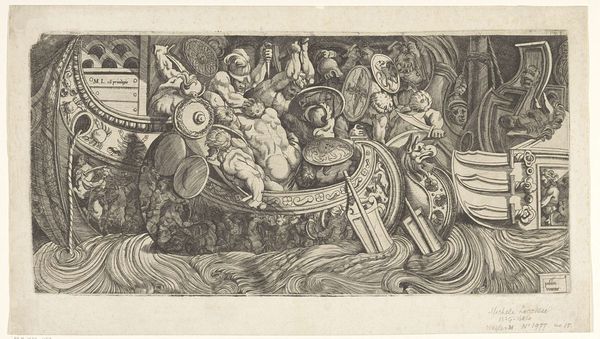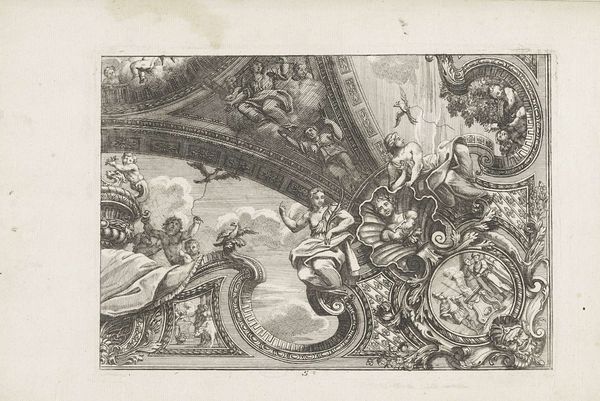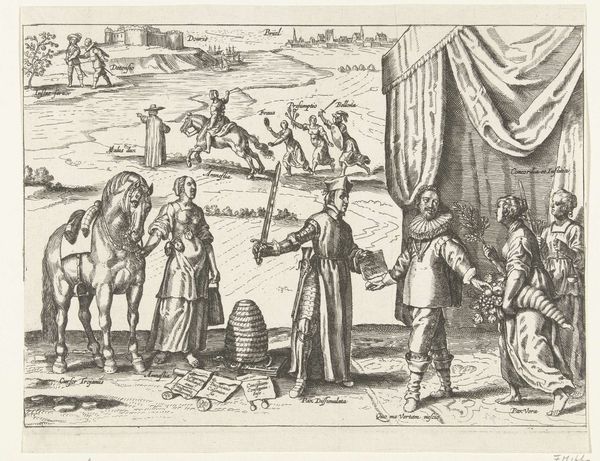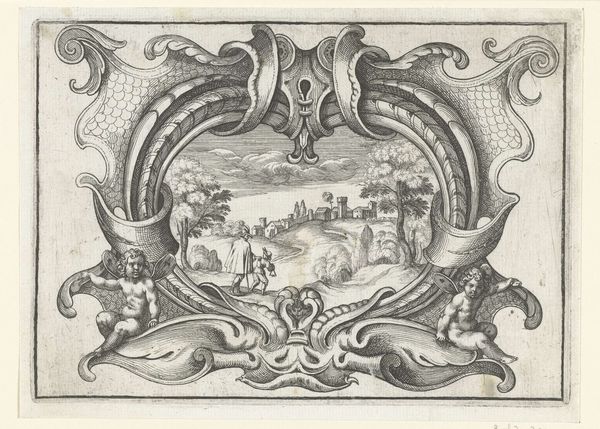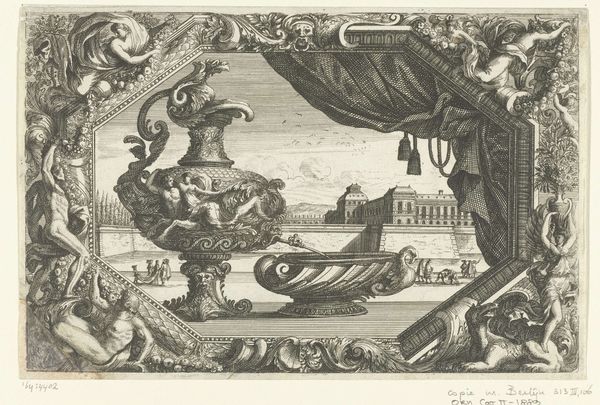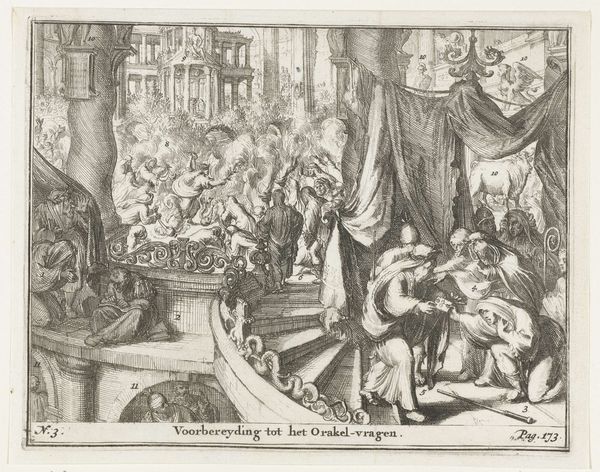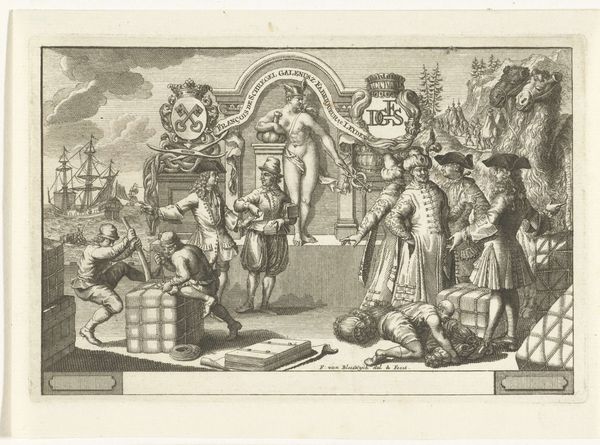
Beleg van La Rochelle, september 1627-oktober 1628 (randwerk, deel linksonder) 1628 - 1631
0:00
0:00
print, etching, engraving
#
narrative-art
#
baroque
# print
#
etching
#
old engraving style
#
personal sketchbook
#
line
#
history-painting
#
engraving
Dimensions: height 163 mm, width 601 mm
Copyright: Rijks Museum: Open Domain
Curator: This is an etching by Abraham Bosse, dating from 1628 to 1631, titled “Siege of La Rochelle, September 1627 - October 1628 (border work, part lower left)." It depicts scenes from the siege, framed by elaborate ornamentation. Editor: My first thought is how meticulously detailed it is! It's remarkable what Bosse achieved with etching and engraving on such a small scale, capturing entire scenes of warfare and pageantry. Curator: Exactly! It is fascinating how the printmaking process here makes it easily reproducible. These prints were disseminated widely, shaping public perception of events like the Siege of La Rochelle. We see here how art functioned as political communication. Editor: I’m also intrigued by the sheer amount of labour embedded in such an artwork. Each line had to be carefully planned and etched onto the metal plate. What type of labor was employed? Was it factory production? To what extent could these printed works have served an active consumer culture? Curator: Bosse was deeply involved in the design, but assistants would've likely been involved in pulling prints. Remember too that the Baroque loved extravagant displays, and these prints acted as miniature stage sets for significant happenings. This print, now held by the Rijksmuseum, connects to its public mission, providing documentation that shaped national historical narrative. Editor: Thinking about the context—the Dutch Republic, a rising commercial power at war—how did prints like this impact the popular imagination? I imagine that ownership of prints such as this was a sign of awareness. A consumer statement perhaps, and potentially, though likely not, a declaration of political sentiment? Curator: Certainly. This would allow them to feel connected to significant historical events. The material existence of these prints—the paper, the ink, and how they were handled—would reinforce the connection to larger historical forces. Editor: So, beyond aesthetics, what strikes me is the way art and historical and political events become inextricably linked here through distribution channels and collecting trends, creating historical perception. Curator: Precisely, shaping how future generations would understand and remember the Siege of La Rochelle. Editor: It goes beyond merely conveying historical facts, offering visual representation of complex socio-political realities by democratizing access. Curator: And impacting our historical interpretation still today.
Comments
No comments
Be the first to comment and join the conversation on the ultimate creative platform.

